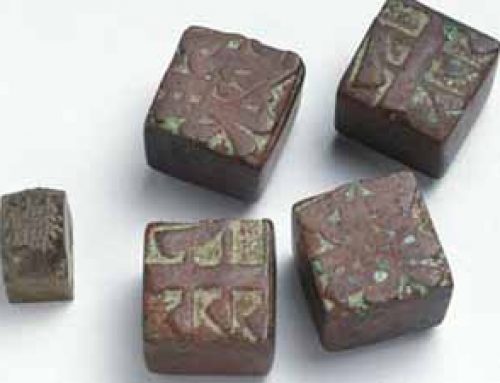
Oranges and lemons come from earlier fruits; this is a type of citron called Buddha’s Hand
Wild ancestors of oranges and lemons
The first wild ancestors of oranges and lemons probably evolved in Australia and New Guinea. The first people probably began eating them soon after they arrived in Australia, about 30,000 BC. As early as the Stone Age, people were eating citron fruits in China, too.
Early Chinese food
World history of food
Citron fruit may have reached China by floating in the ocean, or people on boats may have brought it. Citrons spread from the Pacific across Southeast Asia to India, too. From China and India citrons soon reached Central Asia, West Asia, and East Africa. Citron appears in an Egyptian tomb painting from 1000 BC.
Early Indian food
Central Asian food
Food in early Africa
Citrons as medicine
These citrons were not juicy. People mainly ate the rind rather than the fruit, or used citron rind to make perfumes. Indian doctors knew citrus could cure scurvy (Vitamin C deficiency), and so they tried it for a lot of other sicknesses too. Citrons reached ancient Greece and Rome not much later; Theophrastus described the fruit in 310 BC. The Roman writers Virgil and Pliny called citrons mala Medica, “Persian apples”.
Doctors in ancient India
Ancient Greek food
Who was Pliny the Elder?

Oranges growing in China
Asian food scientists develop oranges
But citrons are not the ancestors of the oranges and lemons you eat today. Those came from two other kinds of citrus fruit, cousins of the citron, called the pomelo and the mandarin. Either Chinese or Indian food scientists bred the pomelo and the mandarin together sometime before 314 BC to get new fruits – the bitter orange and the sweet orange. Indian cooks used bitter orange to make pickled oranges. They called the trees naranga. That’s where our word “orange” comes from.
Marmalade from bitter oranges
These oranges spread west along the Silk Road. The bitter orange (but not the sweet orange) reached West Asia by the time of Ibn Sina (who used it in a recipe), and then in the Middle Ages, the bitter orange reached Europe, where people used it to make marmalade, and North Africa: Albertus Magnus mentioned bitter oranges around 1250 AD.
What is the Silk Road?
Who was Ibn Sina?
Medieval European food
Islamic scientists breed the first lemons
About 900 AD, shortly after they invented purple carrots, Islamic food scientists probably in Iran mixed bitter orange back with its citron cousin to make lemons (that’s a Persian word). Lemons spread south to India, and they joined citrons in Africa.
History of carrots
Sugar in the Islamic Empire
Who was Maimonides?
Saladin‘s doctor, Maimonides, wrote about their medical uses in the 1100s, and after that people began to eat lemons in southern Europe and North Africa. Naturally Jewish people in Egypt combined lemons with another new food, sugar, to make lemonade. By 1450 AD, farmers began to grow lemons around Genoa, in Italy.
Sweet oranges spread to the West
Sweet oranges, on the other hand, probably grew only in India and China until near the end of the Middle Ages. Islamic traders brought Indian sweet oranges to East Africa, and they eventually brought sweet oranges to Genoa.
Medieval African food
Medieval African economy
More about East Africa
And about Genoa
People were growing oranges as well as sugar in the Canary Islands in the Atlantic Ocean before the end of the 1400s. But when Portuguese traders began sailing to India and China, they brought back better varieties, and oranges became very fashionable in Europe in the late 1500s. In northern Europe, where it was too cold for oranges, very rich people in the 1600s even built special glass greenhouses to grow oranges in.
Medieval ships and sailing
The Pandya Empire in India
Ming Dynasty China
Medieval and modern glass
Columbus brings oranges and lemons to the Caribbean
Christopher Columbus brought both oranges and lemons – both new and trendy in Europe – to the Caribbean in 1493. Later Spanish settlers brought the fruit to Florida, to California, to Pueblo land, and to South America – especially Brazil – in the 1500s and 1600s AD, French settlers brought oranges to Louisiana.
The Caribbean
California and the Spanish
Brazil and colonization
The Louisiana Purchase
And when British settlers came to South Africa and Australia in the 1700s AD, they, too, brought oranges and lemons along, so the fruit made a full circle around the world and back to its original home. But in northern places, where oranges and lemons wouldn’t grow, they were still special treats. In the late 1800s, children sometimes got an orange in their Christmas stocking. Even in hot places, oranges were not a huge thing.
Trains bring oranges and lemons north during the winter
In the 1800s, all across Europe and Asia, the new train systems meant that for the first time people who lived in cold climates could eat southern oranges shipped north on trains. Trains brought oranges and lemons north to England, France, Germany, Poland, and Russia. After the American Civil War, people built railroads in the United States, too.
The Civil War
European food
Europe’s economy in the 1800s
Oranges, lemons, and grapefruits became much more popular in colder places, and a lot of people began getting their Vitamin C more from sweet oranges and sour lemons than from onions, chard, cauliflower, peas, and spinach as they had before.
Today’s pickers are poor and badly treated.
When stores started to sell orange juice, in the 1920s, the sweet juice became even more popular than eating the fruit. To pick all that fruit, Florida farm owners recruited African-Americans who had just lost their sharecropping work in Georgia, and then rented prisoners. Recently, they’ve used debt-bondage to force Latinos to work for starvation wages.
What is sharecropping?
African-Americans after slavery
Debt and debt-bondage
Today, most Florida orange pickers are Latinos in debt-bondage. But more than a third of the world’s oranges today come on ships from Brazil. Pickers there work under even worse conditions than in Florida; many are young children, from extremely poor families. In both Florida and Brazil, most of the profit goes to the shareholders in big companies, while the pickers stay very poor.






many thanks for this article.
[…] The deep story of citrus. […]
The migrant families that I know, and know of, are protected here in Michigan by very strict laws. They are people who love, and respect their “Work”, they have wonderful receptions and 16 parties at big halls, police themselves, always include their children. Wear ear plugs if you get invited.
Child care centers near here are state-of-the-art–and not open to others when they are not here. They leave for their ‘homes’ before school starts, and leave the apple harvest to those without youngsters. It is a pleasure to see them shopping in our big box stores, and although they seem to keep to themselves, they certainly don’t appear to be suffering. I miss having them around. They are beautiful people, and the children are just like my grandkids-always a bit trying.
In Florida, we seemed to encounter the same, although we didn’t know them personally.
Your experience sounds lovely, but I’m afraid anecdote is no replacement for data: there are certainly migrants in Florida whose experience is terrible, even if you saw other migrants whose experience was fine. I can’t speak to the situation in Michigan.
What are you considering debt bondage? The “latinos” that I know that work in the fields or groves work when and where they want or do contract work thru the H2 program.
Here’s a court case where the owners were convicted of debt-bondage with regard to Latino pickers, for example: http://www.labornotes.org/2002/07/florida-employers-guilty-slavery
ha she schooled you
“Probably” No facts to be seen here folks!
“Probably” doesn’t mean there are no facts. It means there are a lot of facts that we know, and some other ones that we don’t know, but we have an idea what they probably are. Like if you know your sister usually has toast for breakfast (a fact), you can say that she probably had toast for breakfast this morning, but you don’t know for sure.